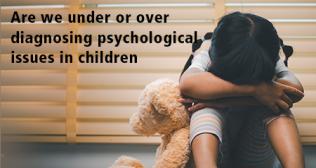
Day For Peace And Non-Violence

Given the alarming increase in violence in the contemporary world, the significance of recognizing a Day for Peace and Non-violence is undeniable. While there is a lot of speculation regarding the reasons for such a growing trend of aggression, especially amongst the youth, the actual need of the hour is to take active steps at each of our individual levels to work towards the prevention of such violence from the roots of the society.
A Preventive Approach
A holistic approach towards prevention of such aggression within the society needs to be targeted at various levels. Even though the adverse impact of such violence seeps down to all sections of the population, bringing focus towards a preventive approach assumes greater significance in the context of the youth of the country.
At the level of school policies, especially to focus on safeguarding innocent children, schools could promote awareness related to issues of violence amongst the children and adolescents, while developing anti-bullying and anti-violence rules and policies to be followed by the students, teachers, parents and all concerned authorities alike. The incidents of violence can largely be prevented by teaching emotional awareness and management to children and adolescents, as they are allowed to explore their feelings, identify and label them appropriately, and look at alternative and less destructive means of expressing themselves. Therefore, it is important to recognize that as we suppress our emotions, especially those of anger or frustration, these feelings tend to fester within us, thereby leading to an emotional outburst which then goes out of our control. Therefore, it is beneficial to encourage the youth to engage in activities like sports, dances, arts, theatre, writing, or other creative sources of venting their emotions regularly. Even appointing the youngsters with an added responsibility can often help them hold themselves more accountable for their behaviour. Within such a preventive approach, it is also important to encourage perspective taking. Efforts should be made to train the children and adolescents in looking at the other side of things as well. It is necessary for them to be able to understand the experiences from the other person’s point of view, in order to fully understand the extent of the impact of such violent behaviours.
At the same time, the promotion of media literacy should be advocated as a major force towards the prevention of violence in the society. To address problems around teenage aggression, media literacy needs to become a priority for school aged children and adolescents. Parents and teachers alike need to be informed of these skills so as to be able to talk to the youth, use media messages as teaching moments and be able to dilute the harmful effects of the media. It is important to help the children and adolescents distinguish between aggression and assertion, and providing them training in their social and interpersonal skills shall help them foster healthier peer relationships as well, with an emphasis on social skills and assertiveness training.
In addition, parental participation is an integral part of successful prevention towards aggression amongst the youth. They should be trained in employing practical strategies for deferring aggressive behaviour in the home settings, to bring an alignment with the policies being implemented by the school or colleges as well. Finally, the role of mental health experts is undeniable in providing support and adequate interventions for the victims as well as perpetrators of aggressive behaviour. The children and adolescents should be educated about the role of the mental health experts, and should not hesitate to seek professional help to overcome their behavioural and emotional difficulties.
Categories
Clear allMeet the doctor

- Mental Health and Behavioural Sciences | Mental Health and Behavioural Sciences | Psychiatry | Clinical Psychology
-
21 Years
-
900



















